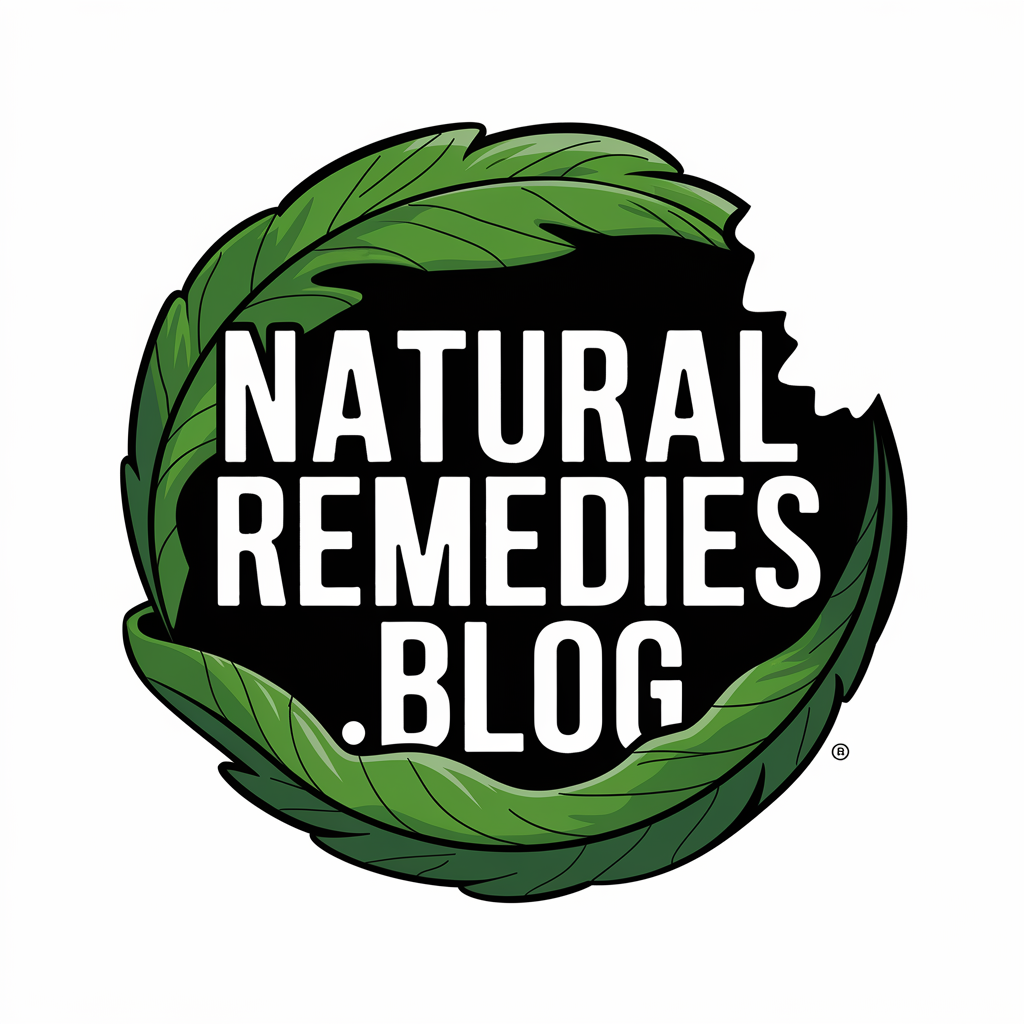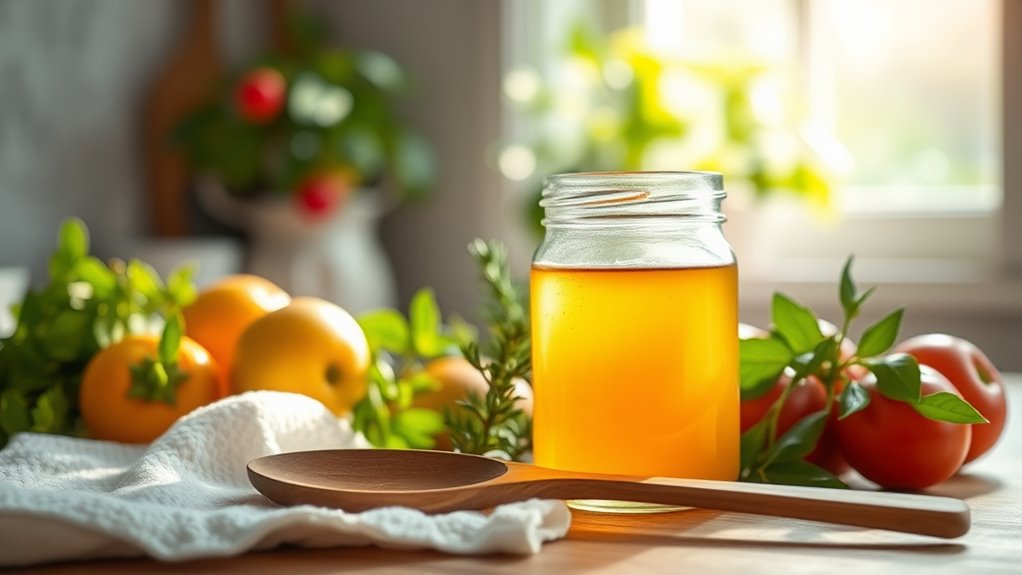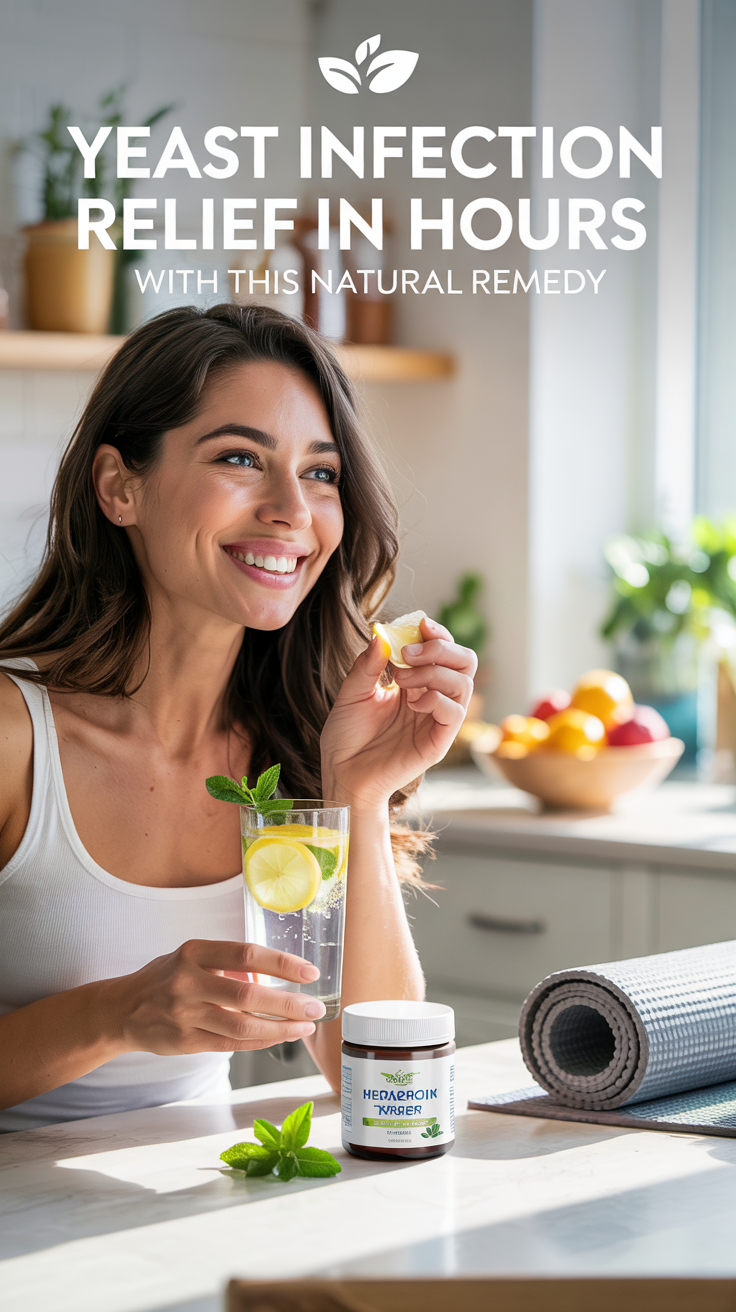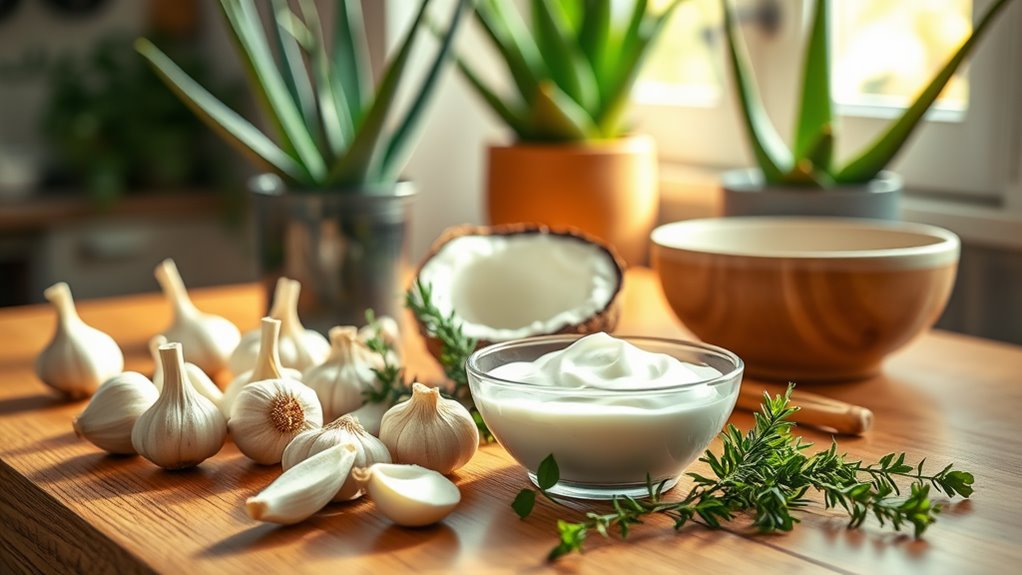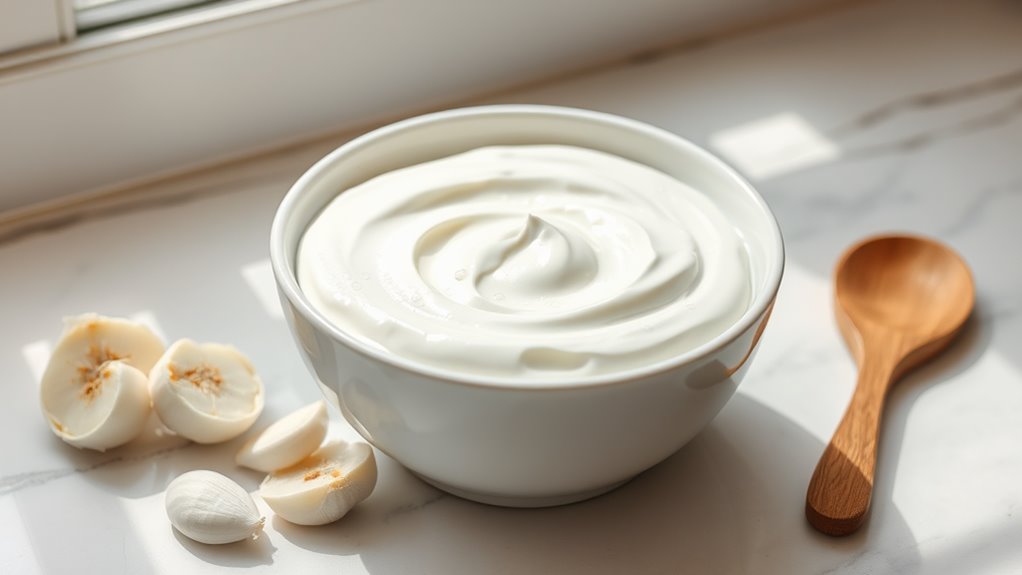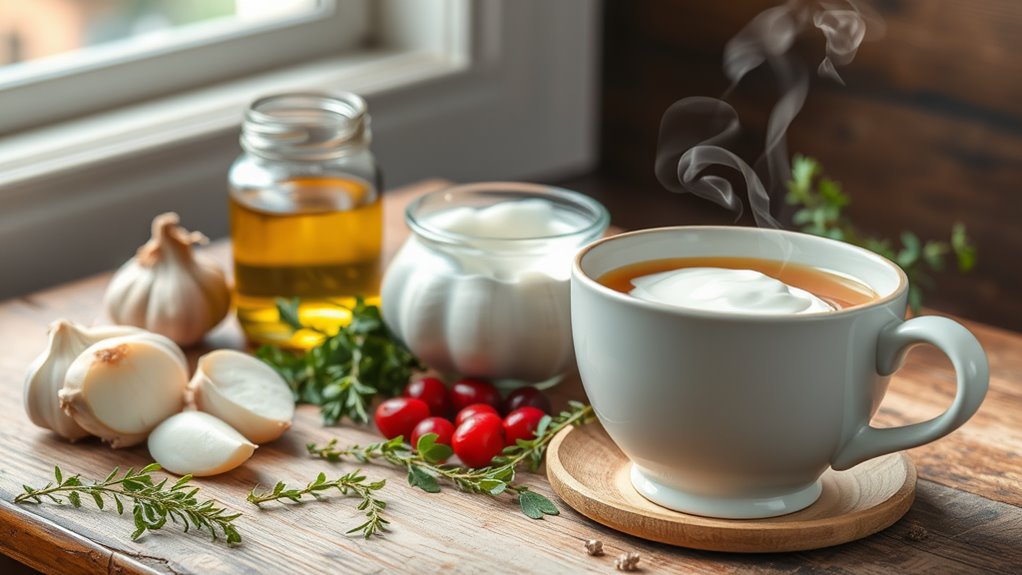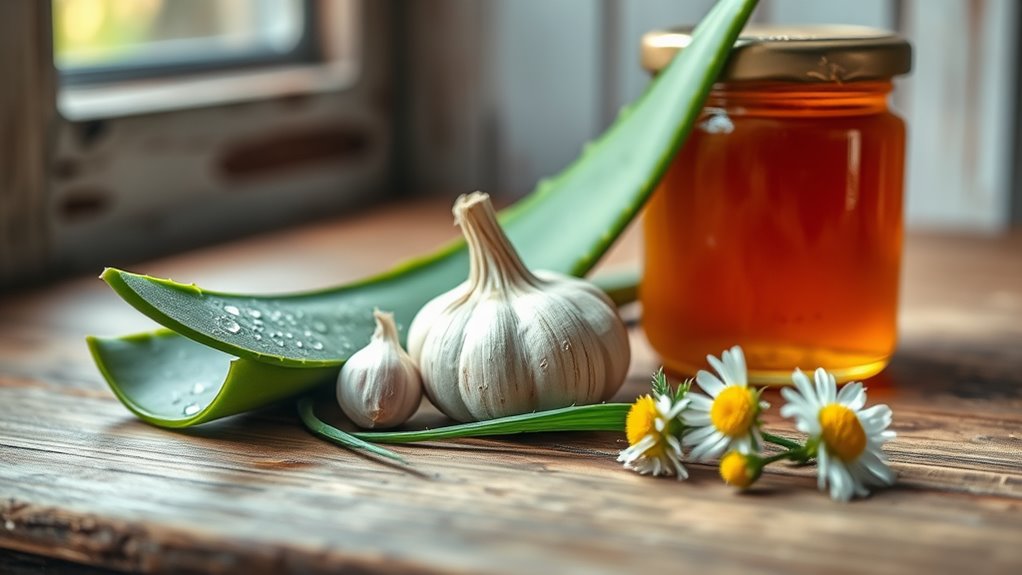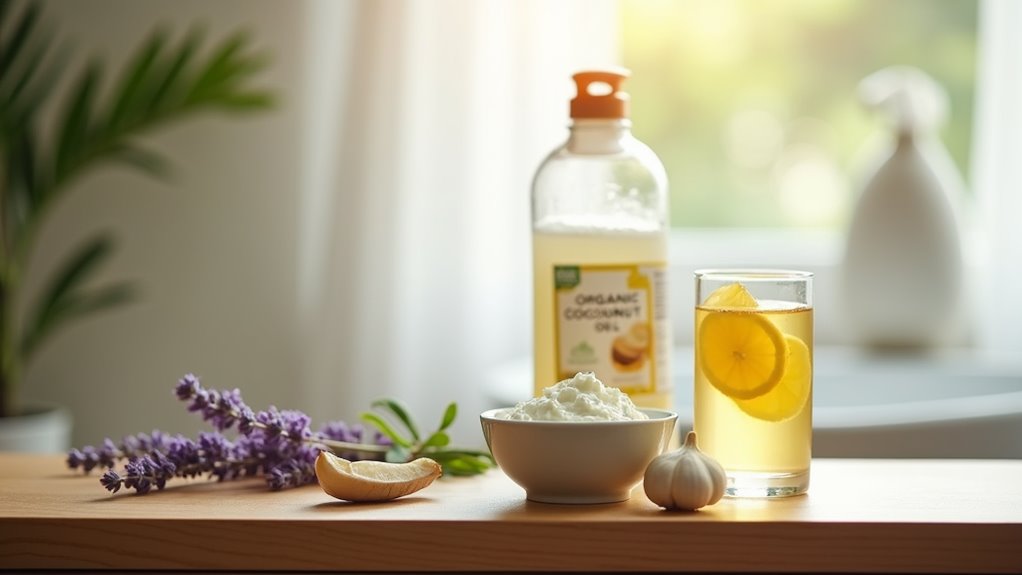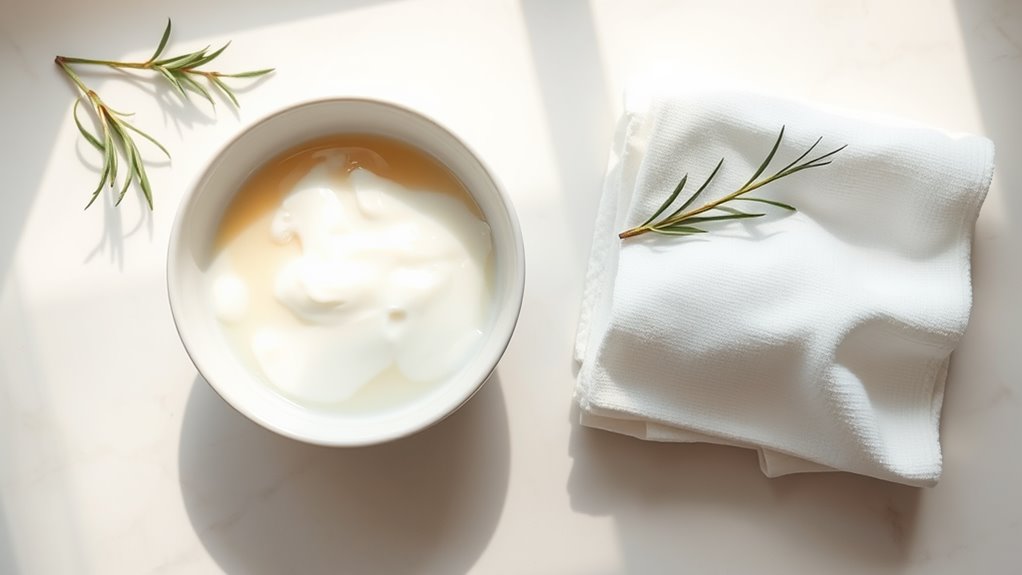Yeast Infection Relief in Hours With This Natural Remedy
For quick relief from a yeast infection, try yogurt. Its Lactobacillus content balances your vaginal flora and inhibits Candida growth. Simply apply plain, unsweetened Greek yogurt directly to the affected area or use a clean finger. You can even mix it with honey for added antifungal power. This natural remedy not only soothes discomfort but also supports gut health. There are more effective strategies to consider, so keep exploring your options for relief.
Understanding Yeast Infections and Their Causes
Yeast infections primarily arise from an overgrowth of Candida albicans, usually kept in check by healthy bacteria.
When antibiotics disrupt this balance, or if you experience hormonal changes, diabetes, or immune suppression, the yeast thrives. Understanding the role of antibiotic disruption is vital as it significantly impacts the delicate balance of bacteria in the body.
Poor hygiene, humidity, and stress can also contribute to the issue.
You might notice thick, white discharge, but some may remain asymptomatic. Recognizing these factors is crucial because understanding the causes can lead you to yeast infection remedies fast, helping you alleviate symptoms and restore balance effectively. Up to 75% of women experience at least one infection in their lifetime, emphasizing the prevalence of this condition.
The Role of Yogurt in Yeast Infection Relief
Yogurt’s probiotic properties make it a popular choice for yeast infection relief. By applying yogurt topically or using sugar-free options, you can potentially restore balance and combat excess yeast growth. This is because yogurt contains lactobacillus, a “good” bacteria that helps balance the vaginal flora and combat yeast overgrowth. Additionally, natural remedies can help restore vaginal pH balance, enhancing the effectiveness of yogurt in fighting infections. Let’s explore how these methods work and how they can be safely incorporated into your routine.
Yogurt’s Probiotic Properties
Fermented delight, yogurt is packed with probiotics, particularly Lactobacillus, which plays a crucial role in promoting both gut and vaginal health.
Here’s how yogurt can support yeast infection relief:
- Maintains Vaginal Flora: Probiotics help balance vaginal bacteria, potentially inhibiting Candida growth. This balance is essential as an imbalance in vaginal yeast and bacteria can lead to infections.
- Supports Gut Health: Yogurt expands your gut microbiome, which can reduce yeast overgrowth.
- Boosts Immunity: Probiotics enhance your immune system, aiding in infection defense.
- Safe Option: There’s minimal risk using yogurt for yeast infection relief, making it a safe alternative.
Incorporate yogurt into your diet for optimal benefits and yeast infection support!
Topical Application Methods
Topical applications of yogurt can be an effective natural remedy for yeast infections, leveraging its probiotic properties to promote healing and alleviate discomfort. You can apply it directly to the affected area using a clean finger or use it as a suppository for vaginal infections. Combining yogurt with honey enhances its antifungal effects, showing impressive clinical cure rates. Cold yogurt may also soothe itching and burning sensations. Ensure the yogurt contains Lactobacillus for best results, as it helps restore balance in the vaginal environment. Always monitor your symptoms and consult a healthcare provider if they persist, ensuring safe and effective treatment for your condition.
Sugar-Free Options Benefits
When it comes to managing yeast infections, opting for sugar-free yogurt can provide significant benefits.
Here are four key reasons to consider it:
- Probiotic Power: Sugar-free yogurt contains Lactobacillus, helping maintain a healthy vaginal environment. Maintaining a balanced diet can also support overall health and prevent yeast overgrowth.
- Antifungal Action: Probiotics can inhibit Candida Albicans, a common yeast infection culprit.
- Low Risk Option: It’s generally safe with minimal side effects compared to some treatments.
- Gut Health Booster: Regular consumption supports the gut microbiome, indirectly reducing yeast overgrowth.
Incorporating sugar-free yogurt into your diet can be a smart, effective strategy for yeast infection relief.
How to Use Yogurt for Maximum Effectiveness
To maximize yogurt’s effectiveness for yeast infections, focus on its probiotic benefits and proper application techniques.
You can apply plain, unsweetened yogurt directly or even create a suppository for targeted relief. Additionally, consider integrating yogurt into your diet to support overall vaginal health while managing symptoms. Probiotics from yogurt can help restore pH balance in your body, fostering a healthier environment that hinders yeast growth.
Probiotic Yogurt Benefits
Probiotic yogurt offers a natural and effective solution for those seeking relief from yeast infections.
Here’s how it can benefit you:
- Contains Lactobacillus acidophilus: This key probiotic fights Candida albicans, the yeast causing infections.
- Promotes a balanced microbiome: Regular consumption helps restore normal flora disrupted by antibiotics.
- Creates an acidic environment: This inhibits the growth of Candida and reduces colonization.
- Affordable alternative: Yogurt is a cost-effective adjunct to over-the-counter antifungal treatments.
Incorporating probiotic yogurt into your diet can significantly enhance your body’s natural defenses against yeast infections.
Application Techniques Explained
Incorporating yogurt into your yeast infection treatment can be highly effective when used properly. Consider these application techniques for best results:
| Method | Description |
|---|---|
| Direct Application | Use a clean finger to apply plain yogurt directly. |
| Suppository Use | Insert yogurt using a tampon for targeted internal relief. |
| Cooling Effect | Apply cold yogurt to soothe itching or burning sensations. |
Aim for twice-daily applications, and always wash off with cool water afterward. Remember to use unsweetened yogurt with Lactobacillus for optimal effectiveness. Always maintain cleanliness!
Dietary Incorporation Tips
Maximize the benefits of yogurt in your yeast infection management by making smart dietary choices.
Incorporate these tips to enhance its effectiveness:
- Choose plain, unsweetened Greek yogurt for potent probiotics.
- Consume 1–2 servings daily, especially in the morning, to boost gut health.
- Mix in honey or raw garlic to enhance antimicrobial properties.
- Avoid high-sugar foods that can promote yeast growth.
Natural Antifungal Agents to Consider
When seeking natural remedies for yeast infections, several antifungal agents can offer effective support.
Coconut oil is renowned for its antifungal benefits, while garlic’s ajoene effectively targets various fungal infections.
Cinnamon and black walnut have been shown to combat Candida effectively.
Essential oils like tea tree oil and cinnamon oil can also help reduce fungal presence.
Additionally, consider adding Lactobacillus acidophilus through probiotics or yogurt to restore balance.
Lastly, compounds like hinokitiol exhibit strong antifungal properties against resistant strains. This can help restore your body’s natural pH balance, which is essential in preventing yeast overgrowth.
Each of these options provides a robust approach to tackling yeast infections naturally and effectively.
Ph-Balancing Treatments for Quick Relief
Here are some effective pH-balancing treatments:
- Greek yogurt with live Lactobacillus acidophilus helps restore balance.
- Boric acid suppositories create an environment unfriendly to Candida.
- Probiotic suppositories deliver beneficial cultures directly to the vaginal area.
- Apple cider vinegar sitz baths (diluted) may temporarily lower pH.
Incorporating these strategies into your routine can significantly enhance your comfort and support vaginal health during a yeast infection. Additionally, addressing root causes such as diet and hygiene can further aid in restoring balance and preventing future infections.
Supplemental Strategies to Enhance Recovery
How can you further support your recovery from a yeast infection?
Start with oral probiotic supplements that contain Lactobacillus strains to restore vaginal flora. Aim for at least 10 billion CFU daily, and consider clinical-grade options for better results. Eliminate refined sugars to curb Candida growth, while incorporating anti-inflammatory foods like garlic and omega-3 fish. Stay hydrated to help detox your body and add 1000mg of vitamin C daily to boost your immune function. For topical relief, apply coconut oil or aloe vera gel to soothe irritation. Additionally, consider using natural antifungal remedies such as apple cider vinegar or essential oils to further combat Candida overgrowth. Small adjustments can significantly enhance your recovery journey!
Tips for Managing Symptoms and Promoting Healing
Are you searching for effective ways to manage symptoms and promote healing during a yeast infection?
Here are some helpful tips to get you started:
- Saltwater rinse: Mix 0.5 tsp salt in warm water for topical application to soothe itching.
- Coconut oil: Apply directly to affected areas for its antifungal properties.
- Cool compress: Use a clean, cold-soaked cloth to relieve burning sensations.
- Wear breathable fabrics: Opt for cotton underwear to reduce moisture buildup.
Implementing these strategies can help alleviate discomfort and support your recovery process! Additionally, it is important to monitor sugar intake as yeast thrives on it.
